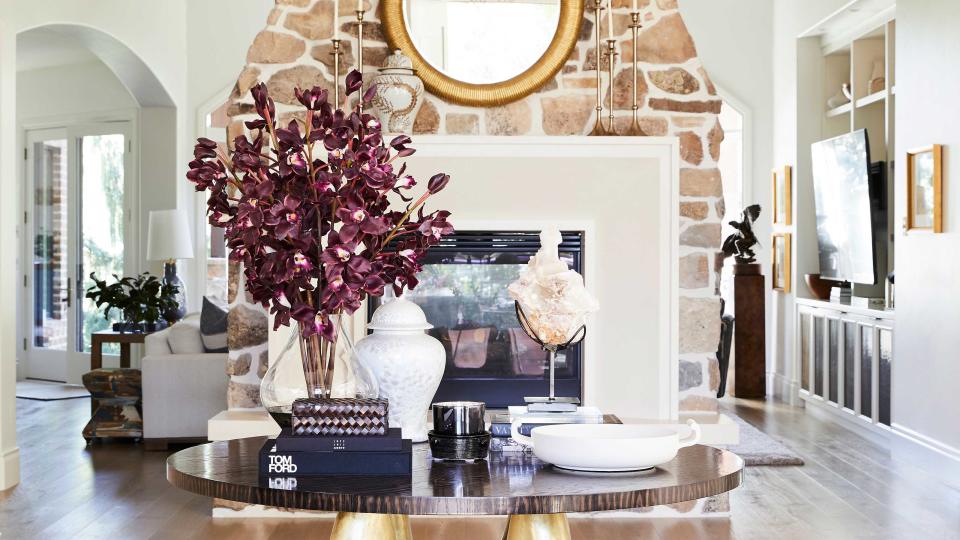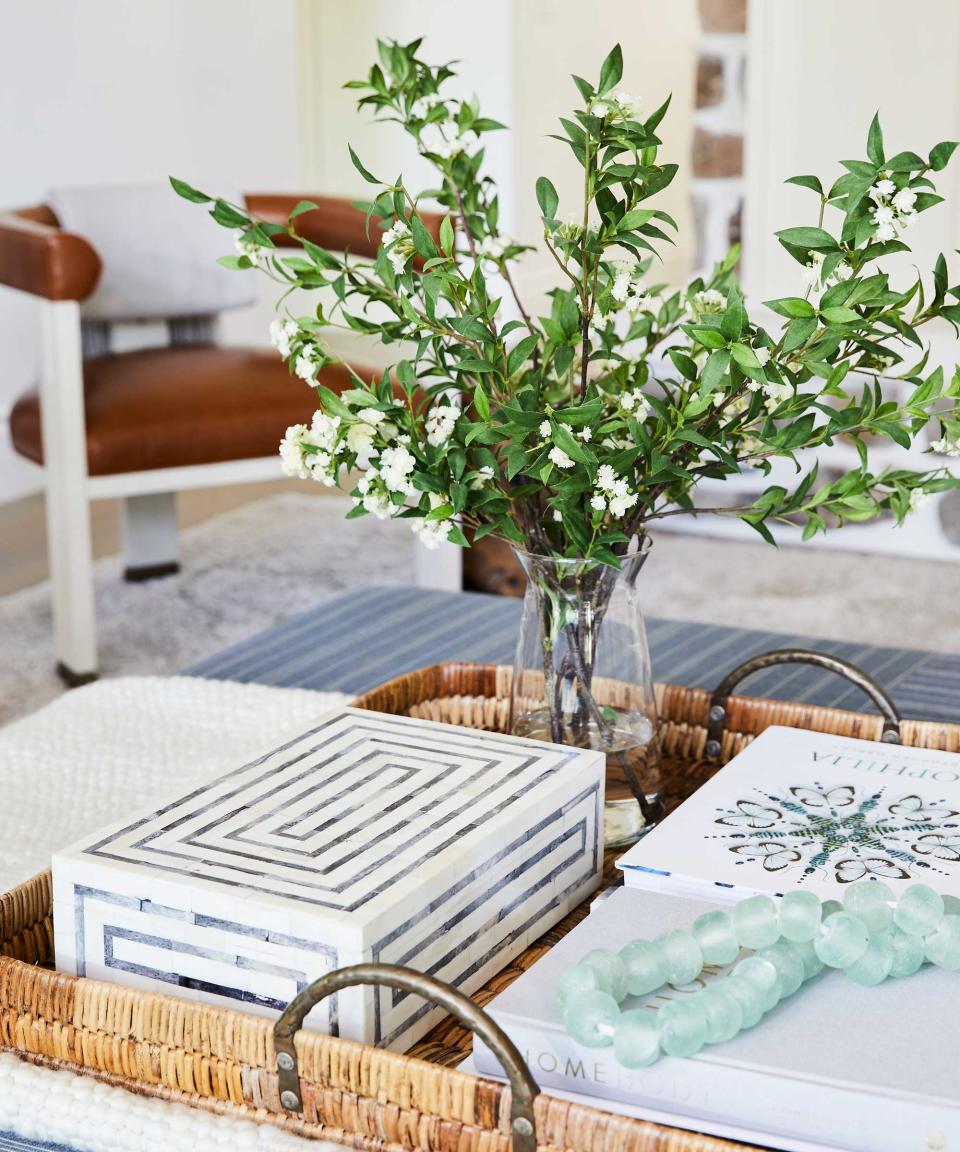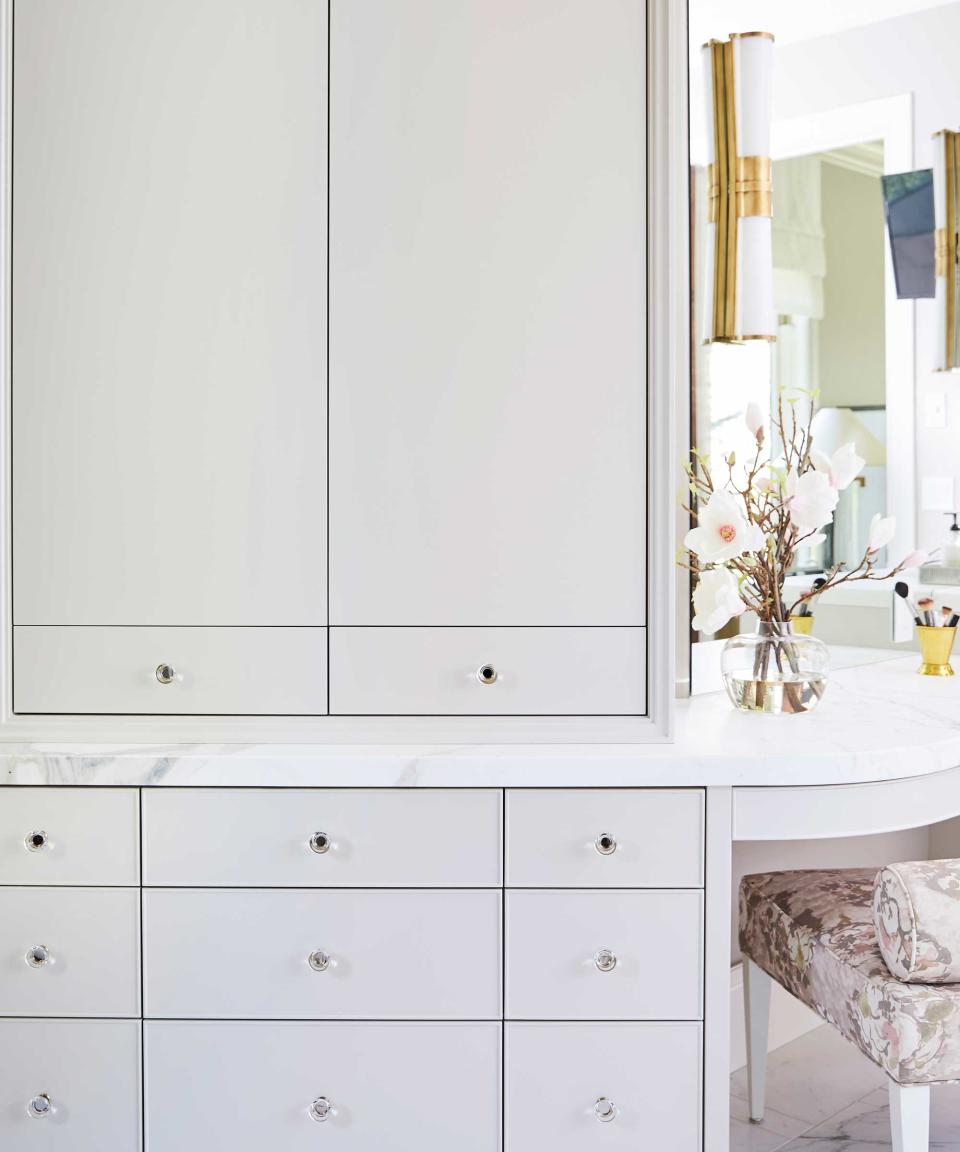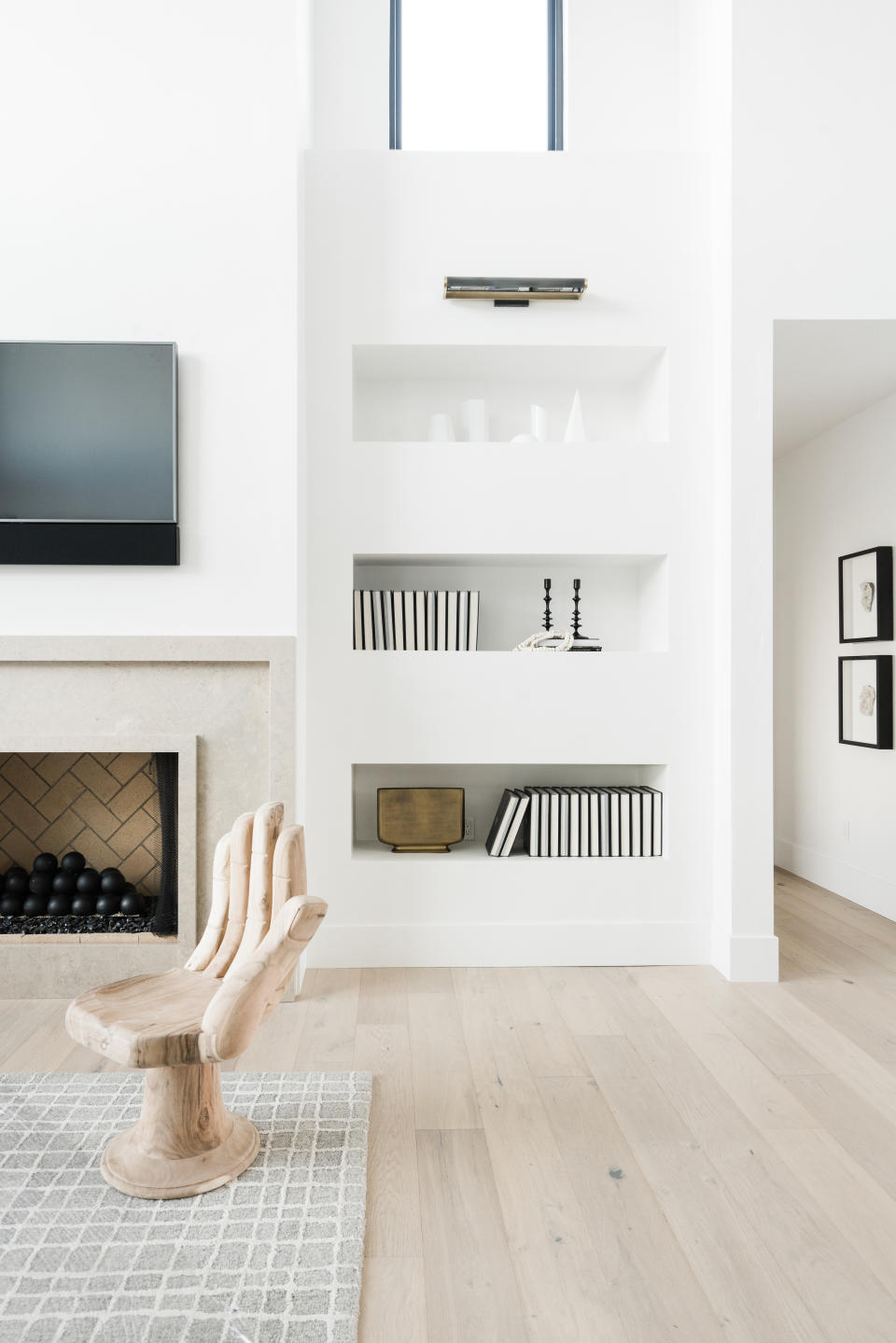Table of Contents

As H&G’s interiors therapist and Feng Shui contributing expert, I’m always excited to talk about interiors therapy and how it takes both decluttering and positive energy to a whole new level in a home.
For many people, although they have heard of Feng Shui, interiors therapy is an untapped resource that is gradually seeping into the awareness of people who feel something is missing emotionally; financially; in their relationship; health; career, or other aspects of their lives.
The method first came to prominence in California when actress Jennifer Aniston engaged an interiors therapist to help her feel good about her home again after her divorce.
How to take your decluttering to the next level, according to an interiors therapist
It’s easy to underestimate the benefit of revitalizing a home, especially after traumatic, stressful, sad, or disappointing circumstances have overwhelmed the people living in it. Starting afresh, rather than being tied to an unhappy past is a step in the right direction.
So what is interiors therapy? I describe it as a dynamic combination of physical and emotional decluttering, mindset, home organizing, Feng Shui, space-clearing, life coaching, and, if you so choose, activating the law of attraction to expectations and creating the lifestyle you’ve been waiting for.
It clears the way for something new and better to enter a home and the lives of the people in it. The important thing to say is that interiors therapy is a process that can change the perspective within a home and attitude so radically, that clutter and mess become a thing of the past, and a happier, healthier, and more successful lifestyle become routine.
As with all the really good things in life, you have to make a little effort to see the benefits of interiors therapy, so I’m going to outline the five stages and explain why it’s so transformative.

1. Clarity
Every home contains possessions, décor items, furniture, and mementos that may have a detrimental effect on emotional well-being because they spark unhappy thoughts or memories of sad, difficult, or stressful times. There will potentially also be art, photos, or ornaments which reinforce feelings of loneliness, difficult relationships, and general dissatisfaction with life.
The thing is, they wouldn’t remotely be described as ‘clutter’ in the traditional sense, and this is where interiors therapy deviates so dramatically from ‘decluttering’. Right at the start of the process, interiors therapy encourages mindfulness and raises awareness of the subconscious impact of certain belongings on health, the bond with significant others, and many other parts of life.
You can experiment with gaining clarity by looking closely at each individual item on the wall of the room you are in and notice the first thing that comes to mind. If it’s anything negative – perhaps it reminds you of an ex, makes you feel angry, irritated, or even remotely miserable – then it’s contributing to an underlying sense of discontent, and it might be time to let it go.
2. Clutter

This step will be familiar to the regular de-clutterer, but if you follow the process all the way to the end, this should be the last time it’s ever necessary to do a ‘big declutter’ in your home. Imagine how much time, money and stress this will save in years to come!
The clutter stage is where you identify absolutely everything which is not supportive of the lifestyle, aspirations, accommodation, and family requirements and makes a conscious decision to release it from your home. By conscious, I mean actually removing it from your home permanently. Not piling it in the hall or junk room, or putting it in the attic, shed, or garage, to think about it, or because it feels like too much effort to deal with it, but recycling, donating, gifting, selling or as a last resort, putting it in the trash straight away.
Having stuff hanging around when you know, deep down inside, it has no real use to you anymore is procrastination and giving in to habit, fear, guilt, or confusion. None of these emotions are helpful and all will ultimately compromise wellbeing. Clutter messes with your mind as well as taking up valuable real estate in your home. Clutter is unique in every home, so your practical exercise for this element of the interiors therapy process is to identify three obvious pieces of clutter and remove them from your home straight away. You may like to experiment with the ‘move out’ method of decluttering, which is based on the idea that if you wouldn’t take it with you to your dream home, you shouldn’t keep hold of it.
3. Clear

So, cards on the table, I’m not a big fan of cleaning! That said, I do love the way every property responds to a freshly cleansed, vacuumed and polished space. It immediately feels more welcoming and creates a new baseline for appreciation of the home. Show love to your home and it loves you back, and that’s what the ‘Clear’ stage is all about.
I’d like you to get in behind all movable furniture, into nooks, crannies and alcoves and remove dust wherever you find it with a Swiffer duster, at Walmart. A thin sheen of dust, especially in heavily polluted areas, is almost to be expected, but when the layers deepen or form bunnies, the dust is going to be interfering with sleep and breathing. Snoring is just the beginning of the cycle of damage dust can do to your long-term health, so stay on top of it from now on.
Next, look out for cobwebs. Spiders build webs in places where they will be undisturbed, and although you’ll be sweeping them away, be grateful for the useful information they provide, because a cobweb signposts you to areas of stagnant energy! To get the best from a home and activate the positive flow of good vibes, it’s really important to have a smooth circulation of lifeforce energy or ‘chi’.
Now you’ve removed the clutter, the heavy dust and cobwebs show you precisely the areas which are burdened with low or negative energy, and give you the perfect opportunity to spruce them up. Even after the first three stages of interiors therapy, your home will feel infinitely better, and that’s why some people make the mistake of stopping there. Please don’t be that person, because the clutter and sluggish energy will creep back if you don’t take the next step to consolidate the sparkling changes you have made.
4. Consolidate
The consolidation stage is where the real magic of interiors therapy starts to happen. I don’t say this lightly. This is where we connect a home to the energy of the earth, anchoring and welcoming in high-grade positive ‘chi’ to support and benefit everyone who lives in it. There are two parts to consolidation. Personally, I prefer to implement feng shui first and then do a final space-clearing ceremony to set everything in place. This, to me, is the icing on the cake, but if it feels right to change the sequence and space clear first, then follow your instinct.
Feng shui is a philosophy that has been in use in the Far East for over 6,000 years. The traditional, more bespoke version, which I’ve come to love and use routinely with my clients, fine-tunes the energy of a home based on compass directions. From over 30 years of experience of practicing firstly the more ‘DIY’ Western feng shui, and then re-training in traditional, compass feng shui, I find the latter is significantly more effective and produces the most wonderful results. Whichever feng shui method you use, you’ll need a floorplan of your home.
Find one in a real estate agent’s details, architects’ drawings, or from a local planning office. Draw a grid of nine equal squares or rectangles over the floorplan, rather like a tic-tac-toe game. Next, if you’re using the traditional method, open the compass on your smartphone and stand in the center of your home to identify which part of your floor plan faces north. Once you’ve done this, you can identify the seven remaining directions and which part of your life (we call these energy centers or ‘guas’) they relate to;
Centre: Health and Wellbeing
North: Career
South: Reputation and Fame
East: Family and the Past
West: New Beginnings and Children
Northeast: Knowledge and Spirituality
Northwest: Travel and Helpful Friends
Southwest: Relationship
Southeast: Wealth, Money, Blessings
You’ll probably find when you compare the direction and subject of the energy center with the places where cobwebs were hanging around, these will correspond with challenges you’re experiencing in those aspects of your life. While I always recommend investing in a detailed compass Feng Shui report to provide unique insight into your particular property, there are many ways you can activate the energy centers to support you. You can learn about the Feng Shui energy map in more detail and how to create good Feng Shui in your home.
Bespoke traditional Feng Shui goes further and incorporates elemental remedies to accelerate your results. Once your remedies are placed and your Feng Shui working in your favor, complete the consolidation process with a space-clearing ceremony. This ceremony cleanses any hidden, residual negative energy from a home and invites fresh new vibes into every corner. It’s a good opportunity to reconnect with your wishes, desires and aspirations as you dedicate your home to a happier, healthier future.
5. Create

This is the final stage of interiors therapy, and it’s where you find opportunities, good luck, and happy coincidences that start to flow into your life. This is the time for setting and achieving new goals, stating intentions, and, if you wish, activating the law of attraction from your newly invigorated space. It is all about living mindfully with gratitude for all you have and are yet to accomplish.
Be sure to acknowledge the good stuff happening to you and around you. If you have followed each stage of the interiors therapy process, you’ll find you routinely wake up feeling more contented, happiness comes more easily than it did previously, and positive energy flows around you.
You’ll recover quickly from minor setbacks and look forward to a brighter future. And the best thing? You’ll enjoy living in a clutter-free, happier, healthier space to such a degree that your tolerance for clutter and mess dissolves. You won’t give houseroom to anything that brings you down emotionally or wastes your valuable time and energy.
FAQs
What is the 12-12-12 rule for decluttering?
Joshua Becker, an author who has written a number of books about minimalism, came up with the 12-12-12 rule. The idea is to find 12 items in your home to throw out, 12 to donate, and 12 to return to their proper home. This can accelerate decluttering and tidying sessions by giving you a numbered list of items and the satisfaction of ticking everything off.
The place stays clean and tidy for longer and you’ll know exactly where to find anything you need within a minute – reducing stress, irritation and smoothing the way for a healthier lifestyle.
